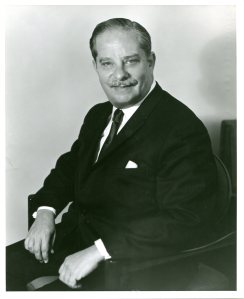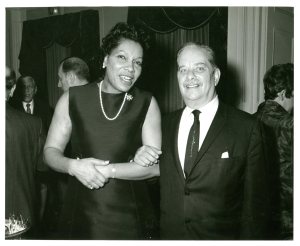The day the New York Times published Murray I. Gurfein’s obituary in December, 1979, they also published an editorial titled, “Judge Gurfein’s First Case”. The editorial reads in part:
“He was a brilliant attorney, an energetic prosecutor, a concerned citizen of the community and, for the last eight years, a distinguished district and appeals court judge. We saw all sides of the man on his very first day on the bench in 1971 when he had The Times in the dock.
“He had stopped our presses—midway through the printing of what came to be known as the Pentagon Papers—because the Federal Government was claiming irreparable damage to the national security. It was a historic test of First Amendment values, a heated struggle between his favorite newspaper and the President who named him a judge … Betraying his own discomfort, he said society ‘must learn to live with embarrassments like the Pentagon Papers’ “.
Quoting from the decision, the editorial continues: ” ‘A cantankerous press, an obstinate press, a ubiquitous press must be suffered by those in authority in order to preserve the even greater values of freedom of expression and the right of the people to know’, Judge Gurfein declared. ‘These are troubled times. There is no greater safety valve for discontent and cynicism about the affairs of government than freedom of expression in any form.’ ”

This news clipping is one of many found in 2 files titled, “Murray I. Gurfein”. Just two of many biographical files maintained by the Public Relations department, they were later integrated into the files the Executive office maintained on members of the HIAS Board of Directors. A board member from “1938?”, according to Gurfein’s handwritten biographical form, he became a Vice-President in 1946, and was elected President from 1956-1957 and 1960-1967. According to his HIAS biography, “he led the agency through a number of migration crises, including the Hungarian revolt, the Suez invasion, the Cuban exodus and the Algerian war of independence.”
A few pertinent facts of Murray Gurfein’s professional life:
Gurfein was born in 1907 in New York City. He was an Assistant District Attorney in New York County from 1938-1942 and served as a Lt. Col. in the U.S. Army during World War II, receiving the Legion of Merit, the O.B.E. from Britain and the Croix de Guerre from France. He served as an Assistant to the U.S. Chief of Counsel at Nuremberg after the war, and returned to New York to practice law with Orrin Judd (and later also with Nathaniel Goldstein).

The Forward published an article by S. Regensberg on March 18, 1956 about Gurfein’s participation in the Nuremberg trials. The article includes a quote from Judge Gurfein about HIAS’ challenges as president: “Today there are not as many Jewish immigrants as in previous years. However, there are thousands of Jews who wander from country to country and the united organizations must stand at their side. The UHS [United HIAS Service], now has offices in all parts of the world … The immigration laws of America are complicated and reactionary, and there is a need for a persistent struggle to liberalize them.”
Unfortunately none of Murray Gurfein’s HIAS files appear to have survived. His correspondence appears scattered through the files of the Executive Vice-President he worked with during most of his two presidencies, James P. Rice, and in his leadership at Board of Directors meetings and Annual Meetings. We expect these files to be open for research by the end of 2018.
That’s Barbara M. Watson. She was the Assistant Secretary of State for the Bureau of Security and Consular Affairs from 1968-1974, administrator for the Bureau of Security and Consular Affairs from 1977-1980, and Ambassador to Malaysia from 1980-1981. She was closely involved with HIAS’ work on immigration.
LikeLike